4 tips including instructions
Build sandcastles, feel the sand between your toes and let your imagination run wild – nearly all children love playing in a sandpit. With a construction kit or sawn planks of wood, build your own sandpit for your garden in no time at all! In this article, we have put together the most important information on location, material etc. for you. Take a look at our 4 tips and instructions for making a sandpit.
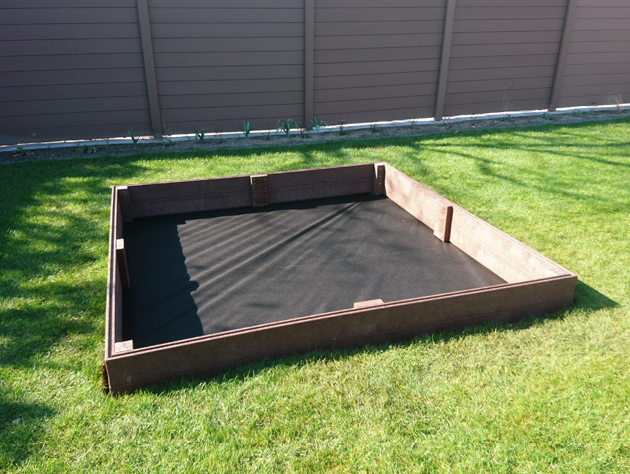
Build your own sandpit or use a construction kit?
If you build your own sandpit, you can adapt the dimensions and shape to your own garden. You will also be free to choose the materials you want so you could, for example, match the wood to your garden furniture. You can also be more flexible with the accessories, such as adding a playhouse, roof or slide. And you could also add benches as you wish.
If you have little experience of DIY projects, we recommend using sandpit construction kits. These contain all the components already cut to size. Then you can start constructing your sandpit straight away.
As a rule, wooden sandpits are made of a simple framework construction made of planks of wood. To make sure the sand stays free from soil, weeds and vermin, the bottom is lined with sandpit fleece. Rainwater can still run out through the water-permeable fleece.
4 tips to help with your planning and preparation
The right location for your sandpit
Since children are considerably more sensitive to the sun, the sandpit should not be placed in direct sunlight but in a protected place in the garden. A shaded or semi-shaded place near the house or under a canopy is best for sun protection. Trees also provide shade. But watch out here, it’s best not to have your sandpit underneath a deciduous tree, otherwise you will be constantly removing leaves from the sand. To protect the sand from being contaminated by plants or animal excretions, it’s best to choose a sandpit with a cover. A simple tarpaulin fixed in place with stones will also do the job, however.
Alternatively, you can also build a roof for your sandpit or place a parasol directly over the playing area. When choosing the right place for your sandpit, make sure that you will be able to see it easily from the terrace, balcony or window.
If you have a robotic lawnmower, check how much distance you need to leave around your sandpit to ensure that the lawnmower can access all areas. You will normally find this information in the operating instructions.
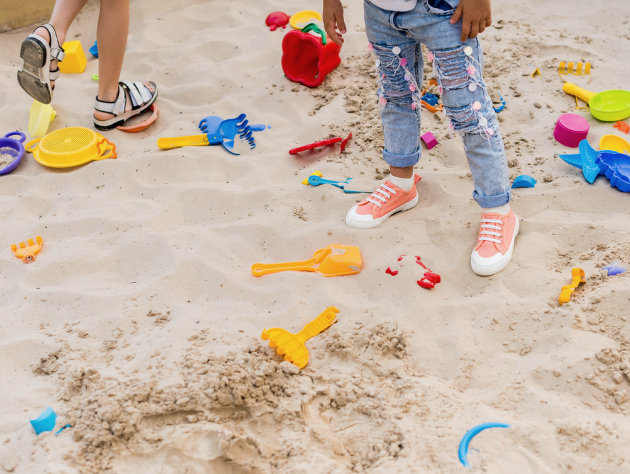
Size of the sandpit
Before starting to build your sandpit, establish how big your sandpit should be. If two children will be playing in it, it needs to be at least 1.5 metres by 1.5 metres. It’s better to make it 2 metres x 2 metres so that there’s plenty of space for having fun.
The right materials for your sandpit
High-quality and weather-resistant wood (e.g. Larch or Douglas fir) is robust and therefore particularly suitable for outdoor use. Cheaper soft woods such as spruce can also be used. If it has not been waterproofed, the wood will have a shorter lifetime of about 5-6 years. It is particularly important that only untreated wood is used. This prevents any potentially harmful substances from wood preservatives being washed into the sand and getting into contact with children’s sensitive skin. Specialist staff at a DIY store or wood stockists will also help you to choose the right type of wood. Plastic sandpits are another suitable option. There are even construction kits available with components made of recycled plastic. The advantage of using plastic as opposed to wood is that it is more weather-resistant and so will last longer.
Choosing the right sand for sandpits
To ensure you can build sandcastles and other sculptures from the sand, it will need to have the right grain size. Ideally, the grains of sand will have a diameter of between 0.06 mm and 2 mm. To protect children’s health, sand used for playing must be free from environmental toxins and dirt. These include, for example, clay, roots, humus, fungus spores, as well as particles of glass or plastic. The grains should also be fine and round to prevent any injury.
If you only want to fill a small sandpit, you can use play sand. Alternatively, washed building sand can also be used. This is usually cheaper in larger quantities and subjected to strict guidelines in the building industry with regard to harmful and foreign substances, just like special play sand. Your local DIY store will usually be able to give advice on suitable sand for your sandpit.
Instructions for building your sandpit
Tools and materials
- Sandpit construction kit or sawn planks of wood in the right dimensions from the DIY store
- Sandpaper, if applicable
- Cordless electric screwdriver with various screwdriver bits suitable for the screws you are using
- Folding rule
- Spirit level
- Tacker, e.g. Novus J-105 electronic tacker
- Gravel or bricks for drainage
- Sandpit fleece
- Play sand or building sand
Step-by-step instructions
Prepare the ground
Do you know how big you want your sandpit to be? Great. Now you can start preparing the ground underneath. Dig a square hole in the ground about 10-15 cm deep (depending on how deep you want your sandpit to be sunk into the ground) in the dimensions of your sandpit, e.g. 2 metres x 2 metres. To ensure that rainwater can run off, you should lay down gravel or loosely arranged paving blocks for drainage. If you’re using paving blocks, you will need to dig the hole a little deeper.
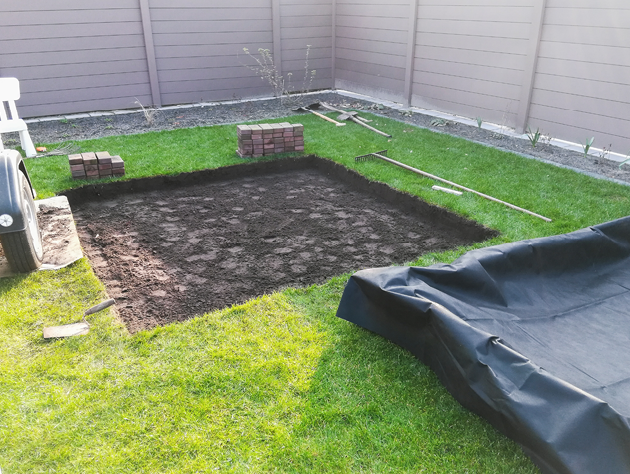
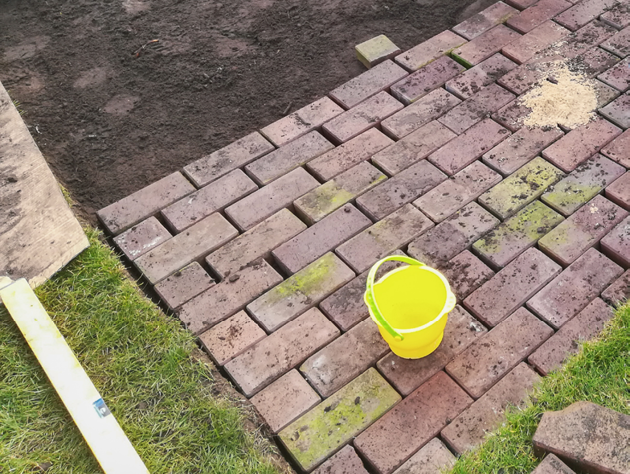
Assemble the sandbox
Follow the accompanying building instructions to put the wooden construction together. Alternatively, you could also build your own individual sandpit of course. To do this, saw the planks of wood to your chosen size and screw these together using square timber and screws to make a square. You could also use more wooden planks to make benches to sit on.
Line the sandpit with fleece and tack it in place
To protect the sand from weeds, line the base of the sandpit with sandpit fleece. To do this, turn the box upside down. Stretch the fleece over the bottom of the box and secure it properly in place. The quickest and easiest way to do this is to attach the fleece using a high-quality electronic tacker, such as the Novus J-105, and flat wire staples. Always start by tacking the opposite sides first. This not only works for wood, but also for plastic. Now you need to turn your completed sandbox back over and set it in place so that you can fill it with sand.
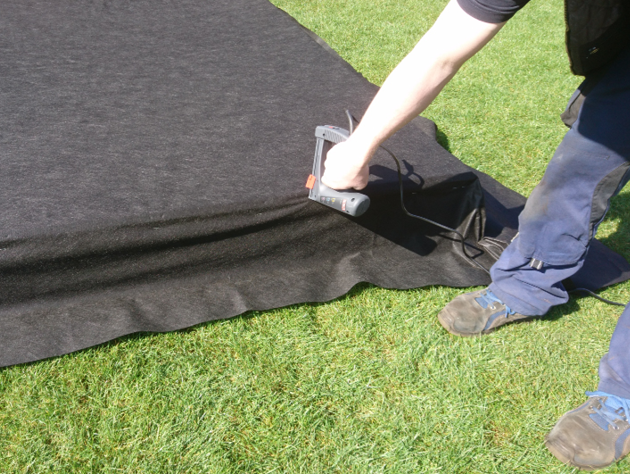
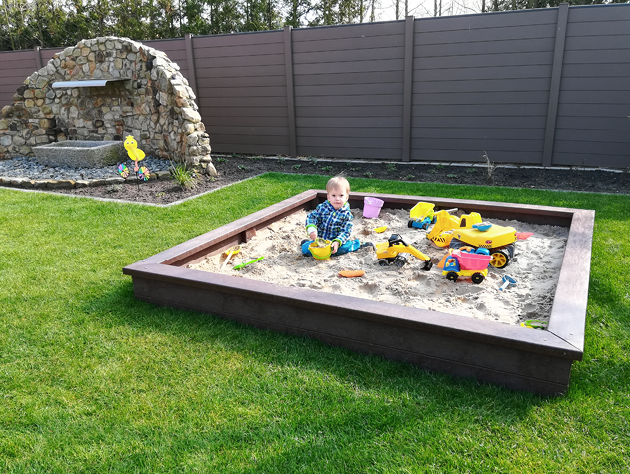
Benches, roof and other fun options
With a little imagination, you can also turn your sandpit into a real playtime paradise for children. Depending on the size of your garden and of the sandbox, you could set up a slide to end up directly in the sand. So you can design your very own playground. You could also place a playhouse right next to the sandpit. Benches around the edge of the sandpit are also practical, so children can sit down while they play. When you buy your construction kit, it’s best to ensure that it also includes a wooden cover or, if not, you can also buy a tarpaulin. This means you can cover the sandpit in the evening to keep it clean.
As you can see, the sandpit project is relatively easy to achieve. If you would like to improve your garden with other easy tacker projects, why not build your own cold frame.
